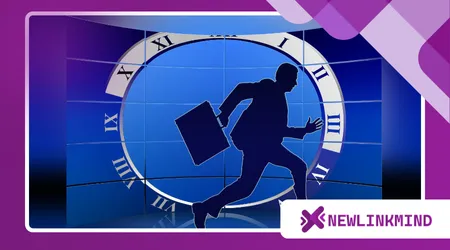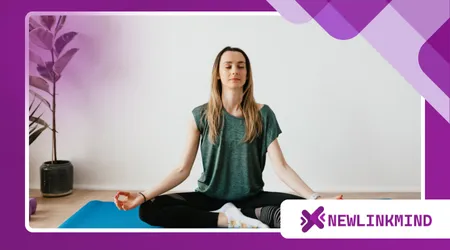How to Stay Present During a Hectic Workday

Anúncios
In today’s fast-paced corporate world, a pervasive challenge is learning how to stay present during a hectic workday.
The relentless flow of emails, back-to-back meetings, and urgent deadlines can easily fragment our attention.
When our minds are constantly jumping to the next task, we lose touch with the current moment, a state that diminishes both our well-being and the quality of our work.
The Illusion of Multitasking
Modern work culture often glorifies the ability to juggle multiple tasks simultaneously. We wear our “busyness” as a badge of honor, believing it equates to productivity.
However, this is a flawed premise. What we perceive as multitasking is, in reality, rapid task-switching, a process that drains cognitive resources and leads to more errors.
Anúncios
The human brain is not wired for parallel processing; it performs best when focused on a single task.
The fragmented attention that results from constant task-switching is the antithesis of being present.
It creates a state of perpetual distraction, where we are neither fully engaged in what we are doing nor capable of truly relaxing when the work is done.
Anúncios
This cycle can lead to burnout, a condition that has become increasingly common in the modern workforce.
Mindful Strategies for a Hectic Schedule
Cultivating a mindful approach to your workday isn’t about adding another chore to your list.
It’s about fundamentally shifting how you engage with your tasks. The goal is to move from a reactive state to a proactive one.
Read more: The Role of Meditation in Leadership and Decision-Making
One of the most effective ways to regain control is to schedule your attention, not just your tasks.
This means designating specific blocks of time for focused work, during which you minimize all possible distractions. Think of your attention as a spotlight.
When you’re constantly multitasking, you’re trying to illuminate an entire stage at once.
When you focus, you’re shining that spotlight on a single, important actor, ensuring you don’t miss a beat. This is the essence of learning how to stay present during a hectic workday.
A simple, yet powerful, technique is the “Pomodoro” method. This involves working in focused, 25-minute intervals, separated by short breaks.
The regularity of these breaks helps prevent mental fatigue and keeps you from feeling overwhelmed.
The Role of Micro-Breaks
In the midst of a demanding day, it’s easy to feel like there’s no time to spare. But even a 60-second pause can have a profound impact.
Read here: Guided Workplace Meditations for Beginners
These “micro-breaks” are not about scrolling social media or checking emails; they are moments to consciously disconnect from your work.
Stand up, stretch, look out a window, or simply close your eyes and take a few deep breaths.

Reclaiming Your Morning and Evening
The way you start and end your workday significantly influences your ability to remain grounded throughout.
Resist the urge to immediately check your phone or email upon waking. Instead, take a few minutes for yourself, perhaps with a short meditation or by journaling your intentions for the day.
This simple act of setting a positive tone can make it easier to stay present during a hectic workday.
Similarly, creating a buffer between work and personal life is crucial.
++ The Best Morning Meditation Apps for Beginners
Many people find themselves answering emails late into the evening, blurring the lines between professional and private time.
By establishing a clear “end of day” routine, you signal to your brain that it’s time to shift gears.
This might involve a quick five-minute cleanup of your desk or writing down a to-do list for the next day, which helps release the mental burden of unfinished tasks.
The Power of Single-Tasking
In an era of endless digital notifications, the discipline of single-tasking has become a lost art.
To truly be effective and stay present during a hectic workday, you must consciously choose to focus on one thing at a time.
This involves closing all unnecessary browser tabs, silencing phone notifications, and dedicating your full attention to the task at hand.
Consider the example of a software developer, Alex, who used to have dozens of windows open, jumping between coding, Slack, and email.
He would often feel stressed and make small, frustrating mistakes.
By implementing a single-tasking rule for his coding blocks, he not only reduced errors but also completed tasks in less time, freeing up his mental energy for more strategic thinking.
This mindful approach to work transformed his productivity and reduced his stress levels.
Another example is a marketing manager, Sarah, who found herself feeling overwhelmed by constant interruptions.
She started using a “Do Not Disturb” function during key creative periods, allowing her to produce higher-quality content in a fraction of the time.

The Science of Presence
Scientific research backs the benefits of mindfulness in the workplace.
A study published in the Journal of Management found that employees who engage in mindfulness exercises report lower levels of job burnout and higher job satisfaction.
This isn’t just a trend; it’s a proven approach to creating a healthier, more productive work environment.
One of the most compelling insights comes from the field of neurobiology.
The prefrontal cortex, the part of the brain responsible for focus and decision-making, can become fatigued from constant task-switching.
By practicing presence and single-tasking, we allow this crucial area to rest and recharge, leading to improved cognitive performance.
The ability to stay present during a hectic workday is not a luxury; it is a fundamental skill for long-term career health.
A New Definition of Productivity
Traditional productivity metrics often focus on output and hours worked.
A more holistic view, however, measures productivity not just by what you produce, but by how you produce it.
Are you engaged? Are you focused? Are you feeling energized or drained at the end of the day?
The ability to stay present during a hectic workday fundamentally shifts this equation.
When you are fully engaged in a task, your output is not only higher in quality but also more satisfying to complete.
This is the difference between mindlessly checking off items on a list and truly excelling at your work.
Consider the analogy of a skilled archer. A novice might pull the bowstring back quickly and release the arrow with haste, hoping it hits the target.
The expert archer, however, takes a moment to breathe, to feel the weight of the bow, and to focus entirely on the target before releasing the arrow.
The expert’s shot is deliberate, accurate, and powerful.
Mastering the Art of Attention
Your attention is your most valuable asset. In a world vying for it at every turn, learning to protect and direct it is the ultimate career skill.
By implementing these mindful strategies, you’re not just becoming more efficient; you’re building a more resilient, focused, and ultimately, more successful version of yourself.
What if we all made a conscious effort to focus on one task at a time, instead of trying to conquer a dozen at once?
The constant bombardment of information will always be a part of the modern workplace. But our response to it doesn’t have to be one of perpetual distraction.
The key lies in cultivating an inner calm and intentionality that allows us to navigate the chaos with grace.
To truly master the art of working, you must first master the art of being. This mastery is what allows you to stay present during a hectic workday.
Frequently Asked Questions
Is it realistic to single-task in a role that requires constant communication?
Yes, it is. The goal isn’t to become completely isolated. The strategy is to schedule communication.
For example, dedicate specific times each day to answer emails and messages, rather than responding to them as they arrive.
This approach gives you uninterrupted focus time for critical tasks while ensuring you remain responsive to your team.
How do I handle urgent requests when I’m in a focused work session?
Set clear boundaries with your colleagues. Let them know you’ll be unavailable for a specific block of time for focused work and provide a timeframe when you’ll be available.
For true emergencies, establish a specific communication channel (e.g., a phone call) that signals an urgent need, so you aren’t constantly interrupted by less critical requests.
Can mindfulness techniques truly help with chronic stress?
A significant body of research confirms that mindfulness and meditation practices can reduce cortisol levels, the primary stress hormone.
By training your mind to be present, you can lessen the impact of stressors and build a more resilient mental state.
Consistency is key, and even short, daily practices can yield long-term benefits.
++ Mindfulness at work – how to stay grounded during times of stress
++ Bringing Mindfulness and Silence into Your Daily Work Routine
